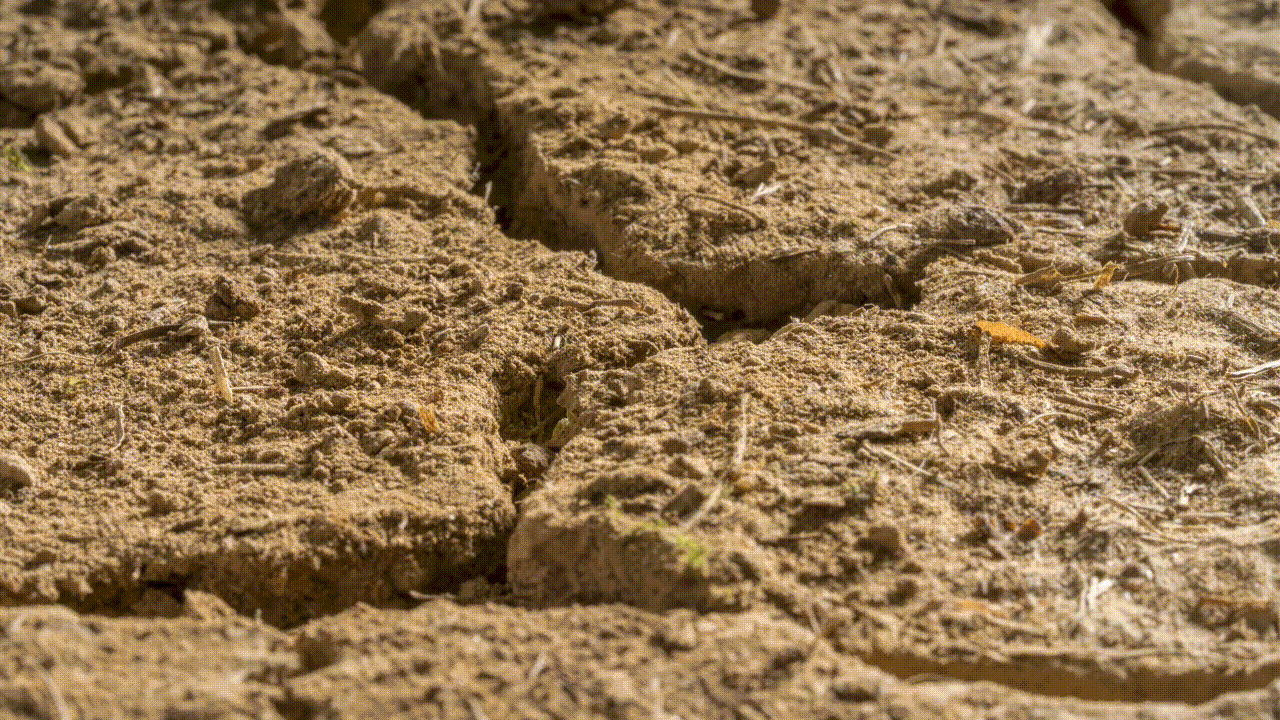Corporates can play a crucial role in navigating the impacts of climate change on the deprived sections of society.
By Nidish Nair and Sambitosh Mohapatra
Societal impact of climate hazards
Climate change, as has been established in the latest assessment report (AR6 WG II) of the United Nations’ Intergovernmental Panel on Climate Change (IPCC)1, threatens the objective of sustainably eradicating poverty.
Some of the key takeaways from the report include:
- Global temperatures have increased by more than 1°C over the last century due to increased greenhouse gas emissions.
- This rise in temperatures may be linked to the increase in the impact and severity of weather events such as heat waves, storms and bushfires.
- The rate and scale of these impacts are accelerating and unfolding faster than expected previously.
The report outlines several scenarios which highlight the social impacts of climate change, specifically on low-income groups. It states that the chances of deterioration of livelihoods and extreme impoverishment intensify for low-income groups experiencing repeated and successive climatic events such as Yaas, Aila, Fani or Amphan, whereby before they have recovered from one disaster, they face another impact, putting their livelihoods in jeopardy. The cascading and compounding risk of multiple climate hazards has the potential to push people into persistent traps of extreme poverty.

Compounding impact of various climate events
Over the last 50 years (1970–2019), climate change has resulted in financial losses worth USD 200 million per day, aggregating to USD 3.65 trillion. Globally, more than 11,000 reported disasters were attributed to these hazards with over 2 million deaths. Moreover, 91% of these deaths have occurred in developing countries.2
India alone faces average annual losses of USD 87 billion due to extreme weather events such as heat waves, intense cyclones, floods and droughts.3 In 2020–21, as many as 13 cyclones hit different Indian states. In 2021, amid the second wave of the pandemic, India witnessed three cyclones, Gulab, Tauktae and Yaas, leaving behind a trail of destruction across several states. The year 2020 marked the first pre-monsoon cyclone in a century – Cyclone Amphan on the eastern coast, followed by another pre-monsoon cyclone on the western coast, Nisarga. As per the India Meteorological Department (IMD), India could witness many similar pre-monsoon cyclones in the coming years.4
Similarly, heat waves have wreaked havoc across the country, with temperatures soaring close to the 50°C mark in several regions in the recent past. The IPCC WGII report has stated that Asia is experiencing high human mortality due to heat waves. The report also warned of the compounding disasters of heat and drought events leading to crop damage and labour productivity losses – effects that India is already witnessing. The succession of heat waves over the past three months, along with long dry spells over northwest India, resulted in power shortages, forest fires and a decline in crop yields.
Again, the disproportionate and cascading impact on the less privileged sections is perceptible. The American Geophysical Union noted that lower income groups face a 40% higher exposure to heat waves as compared to high-income groups. It is estimated that by the end of the century, the poorest 25% of the world’s population will face exposure to heat waves at the same rate as the rest of the population combined.5
The impact of heat waves is especially devastating on the informal sector/daily-wage workers in India and other countries. In addition, the rural and urban population working in the agriculture sector may be exposed to severe heat waves.6
Due to extreme weather conditions, businesses are impacted significantly. This impact can range from heat-induced water stress, physical damage to infrastructure, operational and supply chain disruptions to loss of productivity. Coupled with the need to decarbonise in the wake of India’s net zero economy goals, Indian businesses, prodded by their global stakeholders, face an urgent need to prepare for the physical and transition risks of climate change in order to remain productive and relevant in the current market.
Understanding a community’s exposure to climate hazards
The poorer sections of the society have fewer resources and capabilities to develop effective resilience against disaster events. Consequently, inequalities may further increase among the socially and geographically disadvantaged people due to climate change.
For example, low-lying coastal communities and those dependent upon subsistence agriculture, along with people inhabiting regions that are highly exposed to climate hazards, may suffer sporadic losses due to even small alterations in rainfall patterns and temperature. In the aftermath of any disaster, vulnerable groups such as poor farmers, fishermen and people living in low-income settlements often suffer complete loss of their livelihoods/assets. This makes them poorer than before, thereby perpetuating a cycle of poverty. Additionally, poverty can reduce adaptation options. That is, the poorest groups may need to migrate during climate events and lack of resources often prevents them from doing so.
To effectively address such challenges, more investments must be directed towards helping people adapt to the impacts of climate/natural calamity-induced disasters – that is, towards improving their adaptive capacities. This will require significant commitment and innovative thinking – not just from governments, but also from the private sector and financial institutions and non-bank financial intermediaries (NBFIs). Such investments foreseeably vary according to the quantum of the livelihood system in need of adaptation. For this, a community’s exposure to climatic risk needs to be mapped, subsequent to which it is important to evaluate the impacts climate change may have at the community level.
Financing community resilience interventions to fetch high social return on investments (SROIs)
A majority of organisations perceive climate change in a narrow and fragmented manner – for example, by simply factoring in net zero targets. To protect and enhance assets and value, satisfy stakeholders and regulators, and produce sustained outcomes in a world beset by climate change, organisations and institutions need to develop holistic, comprehensive strategies that consider a system of issues and challenges posed by climate change, biodiversity loss and pollution. These challenges include reducing CO2 equivalents, mitigating physical risks, mitigating resource scarcity and avoiding biodiversity loss.
Across levels, governments too can develop and implement comprehensive disaster risk-financing strategies to reduce risks and provide adequate and timely post-disaster support to strengthen financial resilience.7 Governments, in cooperation with the international community, can establish public programmes of financial support for the community and local investment in risk assessment, risk reduction and residual risk management.
It is also imperative for decision makers and all other associated stakeholders to assess the local adaptive capacity, including risk assessment, planning, budgeting and community engagement. Such measures also have relevance for internationally accepted standards such as environment, social and governance (ESG) and the Task Force on Climate-related Financial Disclosures (TCFD), which plays a crucial role in scrutinising and acknowledging SROIs, transition plans, and climate change risk and opportunity assessments for poverty alleviation and community development.
Several donors have been active in funding community-focused resilience programmes. For example, in Odisha, the focus has been on strengthening the capacities of governments, communities and institutions by accelerating the implementation of disaster risk reduction and climate change adaptation plans. This is being done by setting up Panchayat Knowledge Centres on adaptive water management, conducting community-level learning exercises with a special focus on women and children, and strengthening drainage systems in water-logged areas.8
With the global corporate focus on ESG and TCFD, private sector financing could play a significant role in meeting the incremental gap in financing actions that reduce the negative impact of climate change while taking advantage of potential new opportunities. Financing community resilience interventions would enable corporates to meet TCFD goals, contribute to several Sustainable Development Goals (SDGs: 3, 11), the Human Development Index (HDI) and liveability indices at the points of intervention. In addition, it would fetch investors high SROIs through social, environmental and economic value creation.
There are many private sector initiatives around sustainable community development that are built on local community needs at the grassroots level. These can encompass initiatives such as skill development training for women and the youth, based on local needs. This can help promote green livelihoods such as organic/climate-resilient farming, urban agriculture, decentralised composting, and upcycling waste plastics/fabrics. Such a strategy can lead to a two-pronged benefit by:
- increasing employability skills and income generation among the poor and marginalised communities and
- inducing local climate action, such that with more corporates coming forward to support such initiatives, the localised effects of global warming on the vulnerable sections of society can be curbed to a considerable extent.
Delivering sustained outcomes
Based on the assessment report (AR WG II) that identifies critical next steps and opportunities to strengthen resilience, particularly community-level resilience, the following are a few solutions that need to be considered for implementation:

Based on the assessment report (AR WG II) that identifies critical next steps and opportunities to strengthen resilience, particularly community-level resilience, the following are a few solutions that need to be considered for implementation:
- The report advocates the need for nature-based solutions (NbS) as there is increasing evidence that NbS (e.g. urban green infrastructure, ecosystem-based management) could provide important livelihood opportunities and reduce poverty while also supporting mitigation and adaptation. At PwC, as active proponents of NbS across our resilience projects, we have been promoting green infrastructure such as ecorestoration of canals and water bodies, bioswales/rain gardens for flood control, and bioremediation of legacy waste dumps.
- The main sectors across the globe benefiting from adaptation finance to date encompass water and wastewater management, agriculture, forestry, land use and natural resource management, disaster risk management, infrastructure, energy, and built environment. Future climate adaptation funds and resilience financing mechanisms, including climate and disaster risk insurance, are centred around mitigating potential climate risks of the most vulnerable populations in terms of security with respect to food, income, health and shelter. Going forward, we believe that countries across the world will need to adopt suitable parametric risk insurance products to mitigate the financial risk of uncertain and multiple disasters.
- Though we have witnessed an increasing trend in adaptation funding at the international and national levels for the world’s poorest, adaptation for the impacted livelihoods and opportunities due to climate change are limited only to losses and damages at the individual or household level – without far-reaching convergence at the larger institutional level. The report recommends the need for enabling scenarios for adaptation and effective devolution of climate finance for the poorest to reduce reliance on high-risk, extra-legal sources of income. Investments in ecosystem-based adaptation and NbS are the need of the hour, which in turn signifies the importance of financial mechanisms such as green bonds. Such bonds can raise significant amounts of capital in support of projects with environmental/climate benefits. Similarly the Asian Development Bank (ADB) has been launching theme bonds catering to thematic areas such as water, health and gender that help support resilience-building programmes in these areas.
- The report focuses on the need to develop localised community-led resilience plans based on a participatory planning approach, with interventions involving ecosystem-based solutions/NbS and the promotion of circular livelihoods towards climate-proofing of the most vulnerable communities. In our experience, community involvement and buy-in are the most crucial links to ensuring sustained outcomes in any resilience programme. Therefore, it is imperative to design resilience projects, implementation of which could be piloted at the neighbourhood level and scaled up rapidly with the involvement and ownership of local communities.
Following Yaas, our PwC community of solvers, in collaboration with two NGOs, addressed the urgent needs of the local communities at risk – particularly in the Sundarbans. They enabled locals to explore alternative green livelihood options such as vegetable farming and selling, duck rearing and tailoring. Today, several of the beneficiary families have seen a marked difference as they have taken to tailoring, poultry farming and even floating farms to ensure farming resilience and sustainable agriculture in the face of floods and cyclones.
While businesses worldwide have widely embraced TCFD and are now moving towards Taskforce on Nature-related Financial Disclosures (TNFD) reporting to be able to disclose information on exposure of their respective businesses to natural hazards, most Indian businesses are still trying to weigh their options with respect to climate disclosures.
Considering the magnitude of climate risks and natural disasters looming over the country, corporate India can no longer be complacent in its approach to climate change. In order to stay afloat amid such climate vulnerability, it would need to move beyond ESG reporting to an ESG+R approach. Here ‘R’ – which stands for resilience – would be the missing link that can help address the impacts of climate change on the deprived sections of society while propelling business sustainability through low-carbon economic transition.
Also contributing to the article were: Antara Ray, Daipayan Ghosh, Puspak Ghosh and Vishnupriya Sengupta















